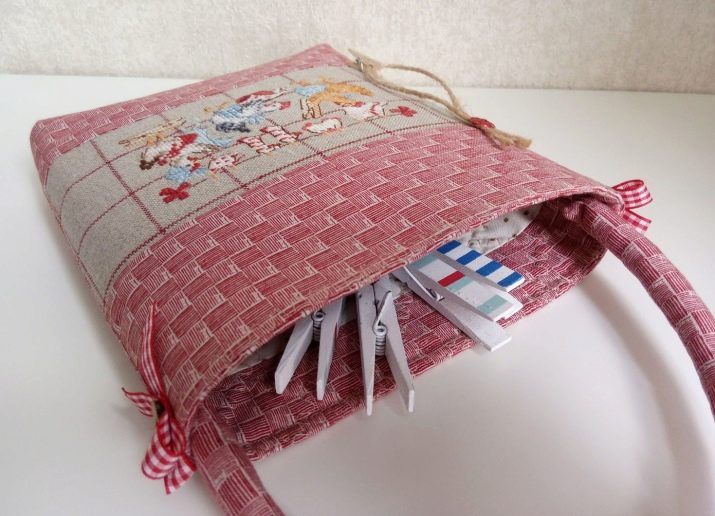All about clothespins

Many of us are familiar with clothespins since childhood - almost all children used them in their games. At that moment, few people thought about how, when and by whom these ingenuous designs were invented. Clothespins, despite their simplicity, have passed their short development path in order to take the form in which we see them now.
All about how clothespins were invented, how to choose them, what modern models are, and much more on this topic will be described in the article below.
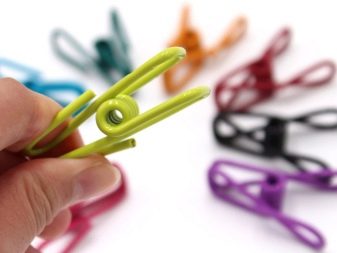
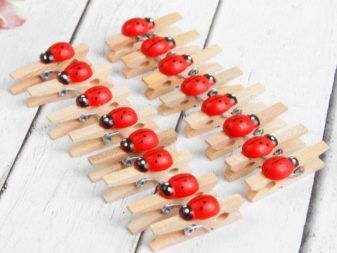
What it is?
Adhering to the scientific style of presentation, we can say that clothespins are some kind of clips that are designed so that clothes or other fabric products can be fixed on a rope so that they dry out. Now, of course, various products of this kind are produced, intended not only for drying clothes..
Clothespins are used not only for their intended purpose, but in general for attaching fabric or matter to any surface, rope, canvas, and so on.
For example, they are used to attach special curtains to a lighting fixture during filming.
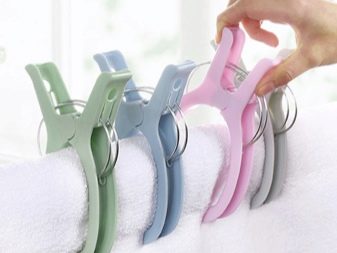

History of appearance
The first similar clothespins were found by archaeologists during excavations dating from the time of the existence of ancient Egypt. They were two small pieces of wood covered with iron rods or animal skins.
It is believed that the first clothespin as we see it today was invented in the 17th century... At that time, the products were in the form of small wooden cylinders with a bifurcated tip. The authorship of the invention is attributed to Anne Lee (British religious leader).Around the same time, gypsy clothespins became popular, which were very similar to the previous ones. However, the latter were made exclusively from willow.
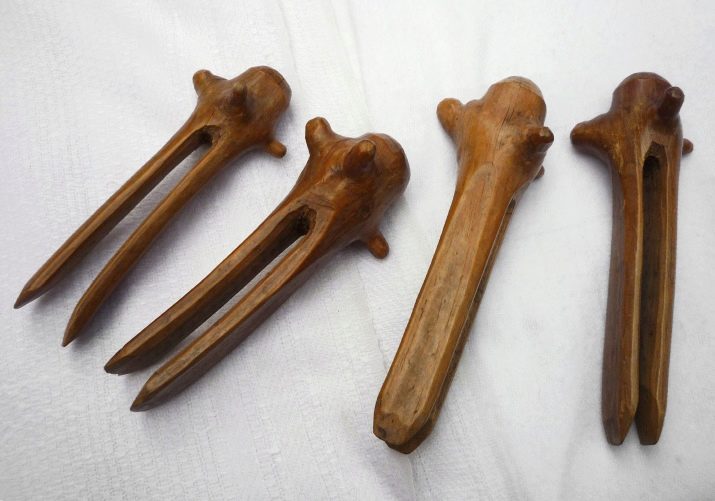
Products with a spring were invented, and later (in 1853) and patented by the American M. Smith. Unlike the past - "folk" - clothespins, these pieces withstood a heavy load, and they practically did not damage the linen.
But the authorship of the final products (such as they are produced and used now) belongs to E. Moore. He added a coil-shaped spring to Smith's clothespin.
If you look closely at this design, you can see that this spring is the axis.
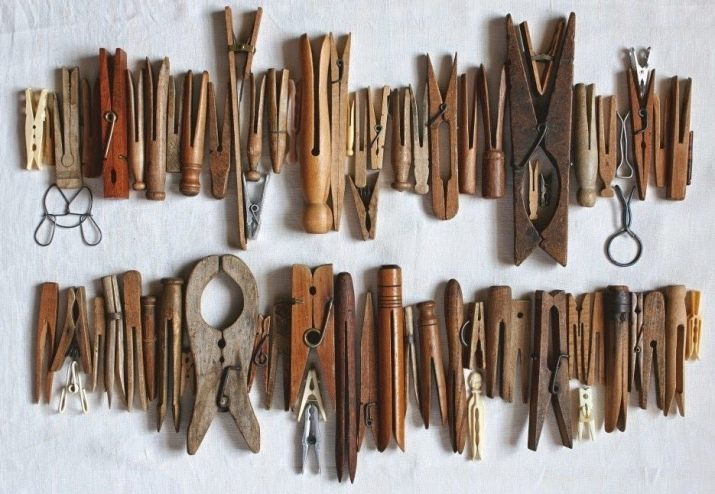
Nevertheless, with the beginning of mass factory production of clothespins, products were produced both with and without a spring. During the previous century, springless designs, bound with iron and with round and rectangular heads, periodically gained their popularity.
Since about the 90s of the last century, the production of products of this kind has declined sharply due to the fact that washing machines, irons, heaters and other electronics have entered into use. Drying clothes for a long time has ceased to be necessary. Today, the production of clothespins remains minimal. Some large companies specializing in the production of clothespins had to close.
A slight surge in the popularity of clothespins has occurred in recent years, when, due to reasons of economy and environmental friendliness, the products began to dry in the air.
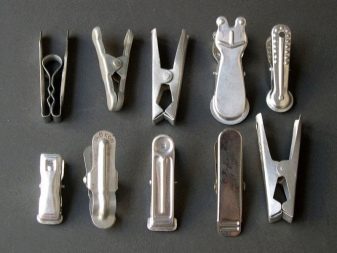

Types by material of manufacture
It is worth noting that clothespins have been produced in large numbers over the past 150 years. In different periods, in the USA alone, the number of copies produced could reach several million. And not all clothespins from this number were a classic, familiar to many options.
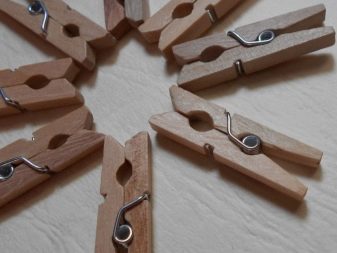
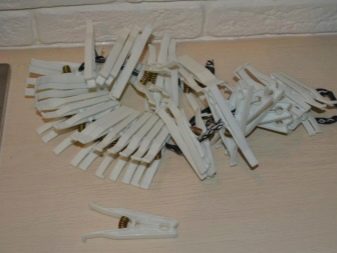
Wooden
Clothespins are made from different types of wood depending on the country in which they are made. For example, in the USA and Poland, they were made from beech and maple, and in Asian countries - from dira (a tree with a thick bark typical for Asian countries). Other types of wood are also used for manufacturing, but these are the main ones. The spring part of the product consists of galvanized steel. When processing wood, paraffin is added.
Now, wooden specimens are rarely used for their intended purpose, and are increasingly used for crafts or decorative purposes.
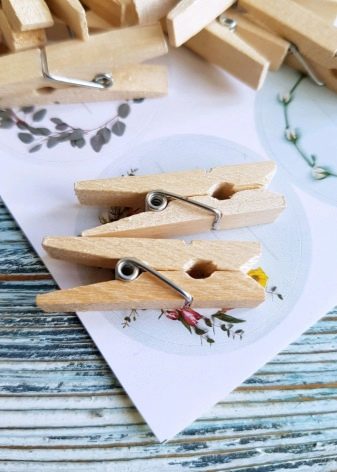
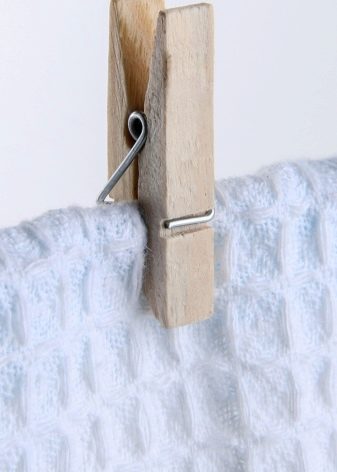
Plastic
Plastic products are the most common at the moment. Usually they are two pieces of plastic of a characteristic shape, held together by one thin spring. Products are made from safe plastic. Modern raw materials are considered to be highly durable and environmentally friendly.
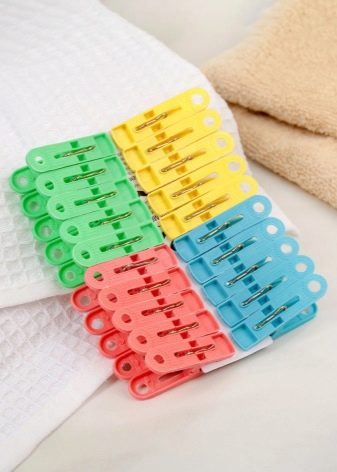
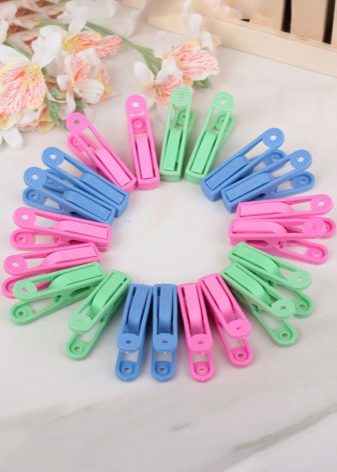
Metallic
The variety of metal models is as large as the plastic ones. Finding and purchasing them is much easier than wooden products. As a rule, an iron clothespin has a more pronounced clamping force than plastic or other counterparts. Often, such products have teeth that can leave or even rip open some fabrics. Usually these are Soviet-made clothespins. However, now there are more gentle models - they have a "soft grip" (not too much grip force). Some of these specimens are hook-shaped, spring-like, and so on. Often made of stainless steel. They can have a different coating (even rubberized).
They are produced not only in the classic metallic shade, but also in various bright colors.
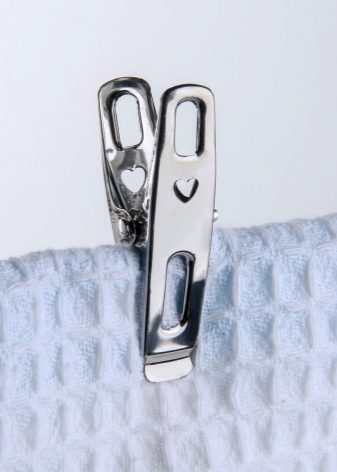
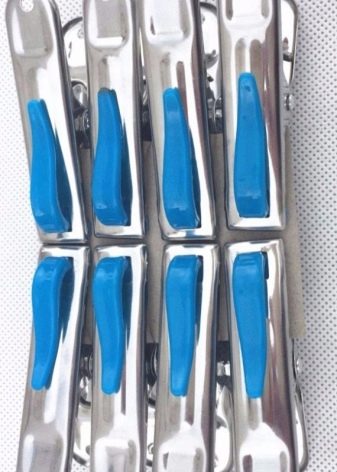
What are they?
As already mentioned, clothespins are divided into different types according to the material of manufacture.
- Wooden products are the most environmentally friendly, but over time they begin to rot and turn black, and also absorb dyes from wet linen (and later stain other things). But they are among the most durable - they hold well almost any clothing.
- Plastic products do not always hold linen well, and sometimes (especially cheap ones) can emit chemical vapors. Nevertheless, they are well suited for drying clothes outside, but they do not tolerate temperature changes: they crack and break. The spring often flies out. Short-lived - after a few months of use, pieces may begin to break off from the products. In some cheap models, the spring may begin to rust due to the fact that manufacturers do not always cover it with an anti-corrosion compound.
- The most durable of the three varieties are metal products. But from constant contact with water, they can also rust and stain laundry. Usually, products may have problems with the spring - it may be too soft for a given design, or, conversely, too stiff. In the first case, the clothespin will break, and in the second, it will be difficult to hold the laundry.
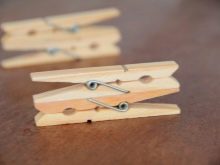
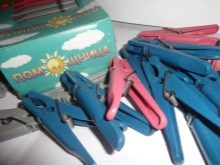
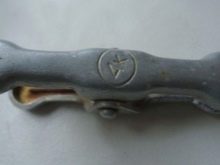
It should be noted separately gypsy clothespins, which are small pieces of wood split in half on one side. These relatively large models are still in use today, although it is very difficult to find them on sale.
Crochet clothespins are not available in every store. They are a clamp to which a piece of wire for hanging is attached from above. They are sold, as a rule, in several pieces (you cannot buy them in the form of a large set) and have a higher, in contrast to conventional counterparts, cost.

There are various thematic options: large and small, round, square, with figures, drawings, and so on.
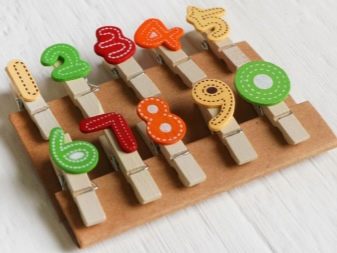
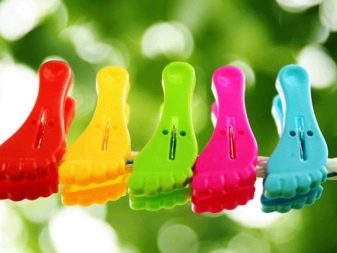
Top brands
Many manufacturers are engaged in the production of clothespins, so it is rather difficult to make a rating of the best brands. but there are several well-known companies that offer a decent and affordable product.
- One of the most famous manufacturers in the world of not only clothespins - York... The brand is originally from the USA, but production has been disbanded around the world. A set of 40 wooden models. will cost 200 rubles.
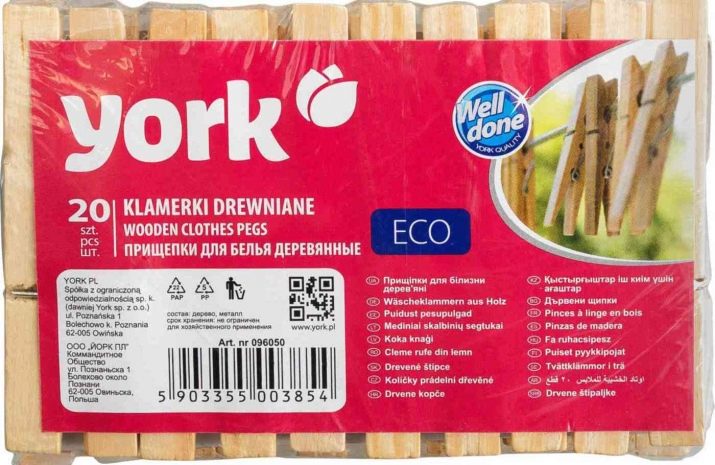
- Domestic manufacturer "Martika" offers standard plastic models. Various colors and quantities of items are available. The products can be found both in online stores and at regular points of sale.
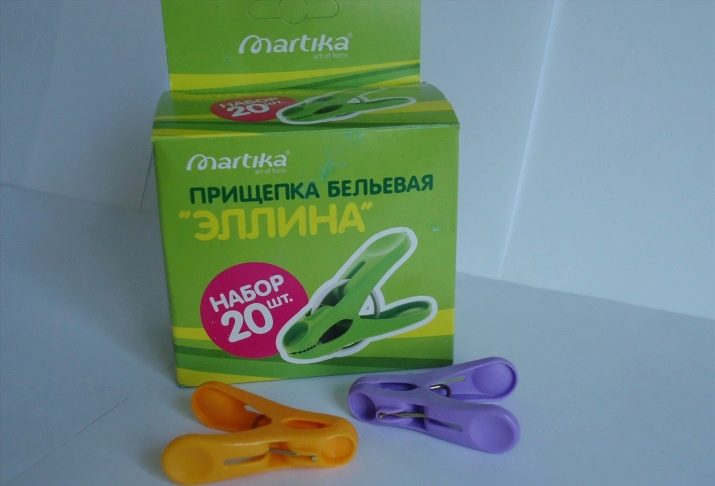
- Ukrainian manufacturer, not quite well-known on the domestic territory Edler offers bamboo wooden models. The brand is better known for the production of household appliances, but it is also engaged in the production of various trifles for household purposes.
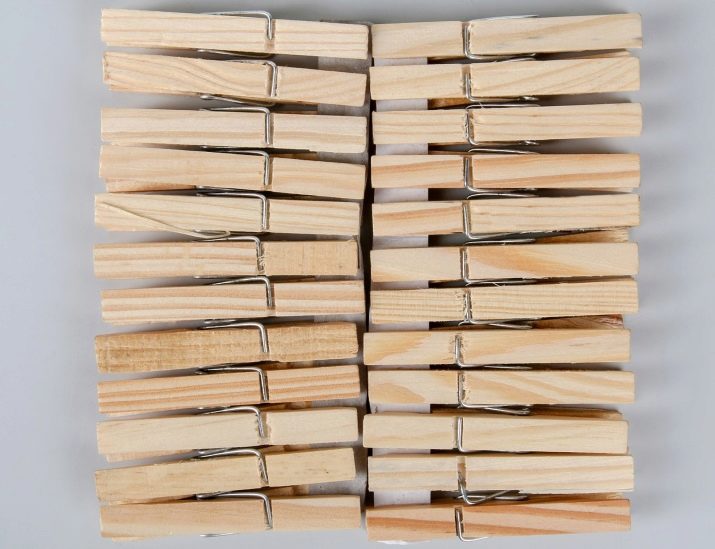
Also worth noting are clothespins with a hanger from a Japanese manufacturer. Kokubo.Korean samples from Hyggee, as well as products from a world famous brand Ikea... All models from these factories are of relatively high quality and have received good reviews.

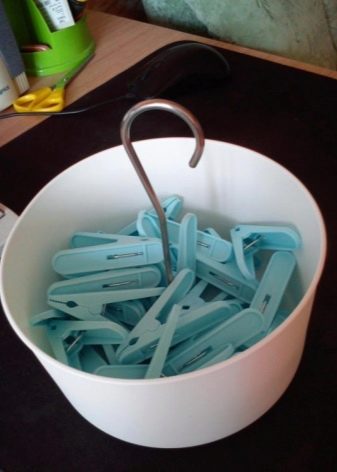
Which one is better to choose?
It's no secret that now you can find many different types of almost any product. And clothespins are no exception in this regard. All varieties have their advantages and disadvantages, and you need to select them, focusing on your convenience.
- The material of manufacture plays a key role in the selection of products... The most durable are metal clothespins. But over time, they rust, stop unbending and leave marks on the fabric. Wooden ones are beautiful, environmentally friendly, soft and the most gentle, but they themselves deteriorate over time (soften, rot, and so on). Plastic ones can serve for a long time - until one fine moment they simply break off. But they are the cheapest, most affordable and most beautiful.
- Fastening element... It is better to choose clothespins not with a spring, but with a fastening ring. The first can fly off over time, while the ring is a more reliable component. The downside is that it is not always possible to find such a product.
- Unusual options... A relative novelty is digital clothespins. They can notify a person that it is raining, snowing, and so on.They send messages that the laundry needs to be collected.
- Clamping force... This item also applies to spring products. The smaller it is, the worse the clothespins hold the laundry. Weak clamping models are not suitable for bedding. Unfortunately, you can check this only when purchasing or even after purchasing a product.
- Products are relatively durable, therefore do not buy too large a set... For one small family, a set of 20-30 pieces will be enough.
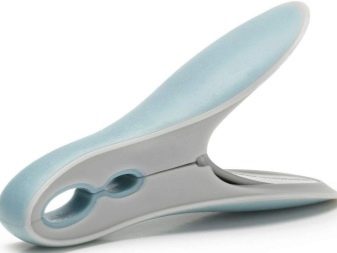
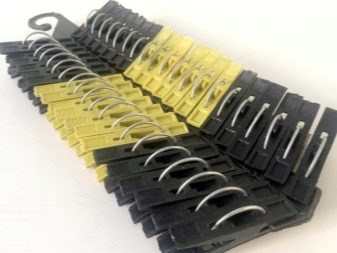
How to store?
Sometimes you will see clothespins being left directly on the clothesline. This storage is not correct. Under the influence of various precipitation, clothespins will rust, crack, lose color, and so on. Wooden models are especially capricious in this regard.
Store clothespins properly in a dry container. They must be dried beforehand.
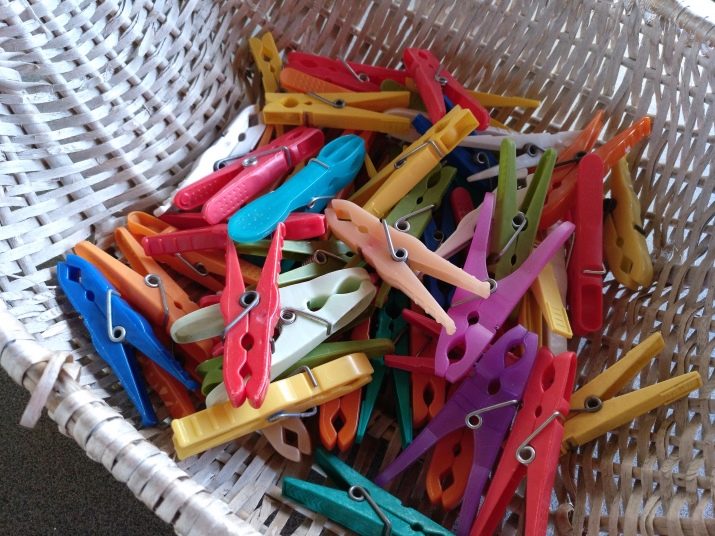
Previously, clothespins were stored attached to a round "frame". The result was a "sun" of a couple of dozen copies. Instead of a rigid frame, many used a dense thread tied at two ends. This method is also not entirely successful - the spring may wear out. Therefore, it is only suitable for taking a lot of clothespins with you just before hanging the laundry.
Not very good ideas for storing clothes pegs also include placing them in a jar, wooden container (for example, a box). In this case, the metal parts of the products will rust over time. If you still want to store clothespins in a wooden container, then you need to pre-cover the box with several layers of varnish.
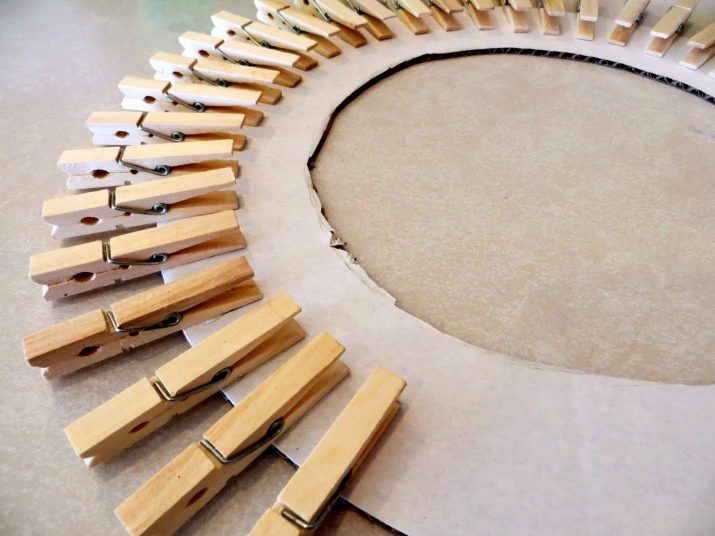
There are special soft woven boxes in the form of cylinders with a waterproof material as a lining. Such "boxes" have special hooks (often plastic) so that they can be suspended. Some craftswomen sew special decorative bags for clothespins. It looks, of course, very neat, but for reasons of convenience it is not suitable for everyone.
